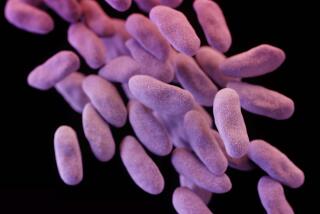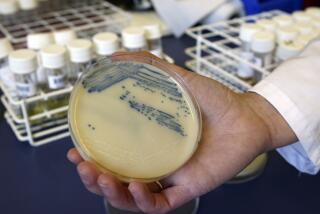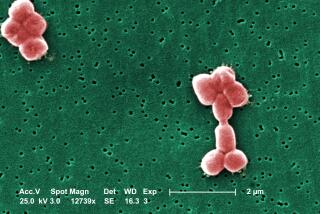Despite Questions of Efficacy, Antibacterials Clean Up
HIGH POINT, N.C. — Popular antibacterial hand soaps provide extra protection against nasty germs like staph, E. coli and salmonella, but they aren’t new, they don’t sterilize hands and they aren’t approved by the FDA.
Nonetheless, consumers have made antibacterials a big business. Last year, retailers sold about $400 million worth of antibacterial hand soap.
Half the dish soaps on grocery shelves bear antibacterial labels. Antibacterial agents also are used in toothpaste as well as in cleaners for fabrics, rugs, kitchen counters and toilet bowls.
For all that, many experts say thorough hand washing with regular soap is still the best way to clean hands and prevent the spread of disease. Moreover, some are concerned that antibacterials might lead to development of antibiotic-resistant strains.
“What’s important is washing your hands,” said William Schaffner, chairman of the department of preventive medicine at Vanderbilt University School of Medicine. “What’s less important is what you use.”
Purported germ-killing soaps have been on the market since the 1920s, according to the Soap and Detergent Assn. Hospitals have used germ-killing scrubs for many years.
Only in recent years has the term “antibacterial” become a buzzword in the soap products industry, said Keith Hostetler, vice president of Ciba Specialty Chemicals’ antibacterial products division in High Point.
Swiss-based Ciba makes Triclosan, a bacteria killer and growth inhibitor created in 1965 and found in antibacterial soaps sold by companies such as Dial, Colgate-Palmolive and Bath & Body Works. Ciba first used Triclosan in laundry detergent to fight odor-causing bacteria, Hostetler said.
The 1970s saw the advent of germ-killing soaps like Irish Spring and Lifebuoy, but most did not bear an antibacterial label.
Liquid Dial, with an antibacterial formulation and label, was introduced in 1986, said Dial spokeswoman Nancy Stern. It was the first liquid antibacterial soap.
Dial began stamping its bar soap with antibacterial labels in the early 1990s without changing the makeup of the soap, which had been around since 1972, according to Janet Donohue, a spokeswoman at the Soap and Detergent Assn. That practice is acceptable as long as companies reapply with the U.S. Food and Drug Administration.
Other companies began introducing antibacterial soap three to four years ago.
Antibacterial products are catching on because people travel more and use public transportation, more children go to day-care centers, and hospital patients are being released more quickly, Donohue said.
“I think the public likes it. I personally like the antibacterial soap. Why would I take the risk if I have the option [of using antibacterial soap]?” said Barbara Jorgensen, a spokeswoman at Bath & Body Works. Owned by The Limited, the store introduced antibacterial hand soap in 1996.
While antibacterial product makers acknowledge that regular soap works too, by washing away germs, they say their products kill the germs and stop bacteria growth for as long as six hours.
Hostetler said Triclosan adds staying power to soap, which is important because most people either don’t wash their hands at all or don’t wash them enough.
“It’s a convenience, an extra level of protection,” he said.
In a test at Ciba that shows the long-lasting effect of the product, a volunteer washed her hands with liquid soap and then placed her fingers in a petri dish teeming with staph bacteria.
She returned to the lab two, four and six hours later to repeat the test without washing her hands. When the petri dishes were examined 24 hours later, researchers found the bacteria was killed in the areas touched by the volunteer.
Experts, however, say it is impossible to kill all the germs on hands.
While Triclosan slows bacterial growth, bacteria always grow back, said Ralph Raasch, associate professor in the school of pharmacy at the University of North Carolina at Chapel Hill.
“The skin has lots of bacteria on it. It’s very difficult . . . to totally destroy the population with any chemical,” Raasch said.
A study last year by Tufts University showed antibacterial agents and antibiotics might even cause bacteria to become resistant.
The federal Centers for Disease Control and Prevention and the American Medical Assn. neither support nor criticize use of antibacterial soaps, but favor a good hand-washing with regular soap and water to prevent the spread of disease.
Antibacterial soaps fall into a gray regulatory area. The FDA hasn’t weighed in yet with standards and approvals pending further study. Hostetler said antibacterial manufacturers tend to follow standards last proposed by the FDA in 1994.
Although conceding antibacterials do not sterilize the skin, Hostetler says they control bacterial growth. “Less bacteria is better than more bacteria.”






